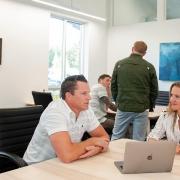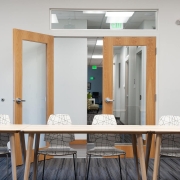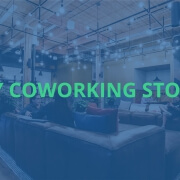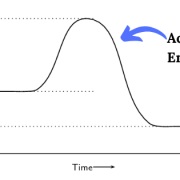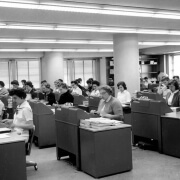Coworking & the 3/30/300 Rule of Thumb
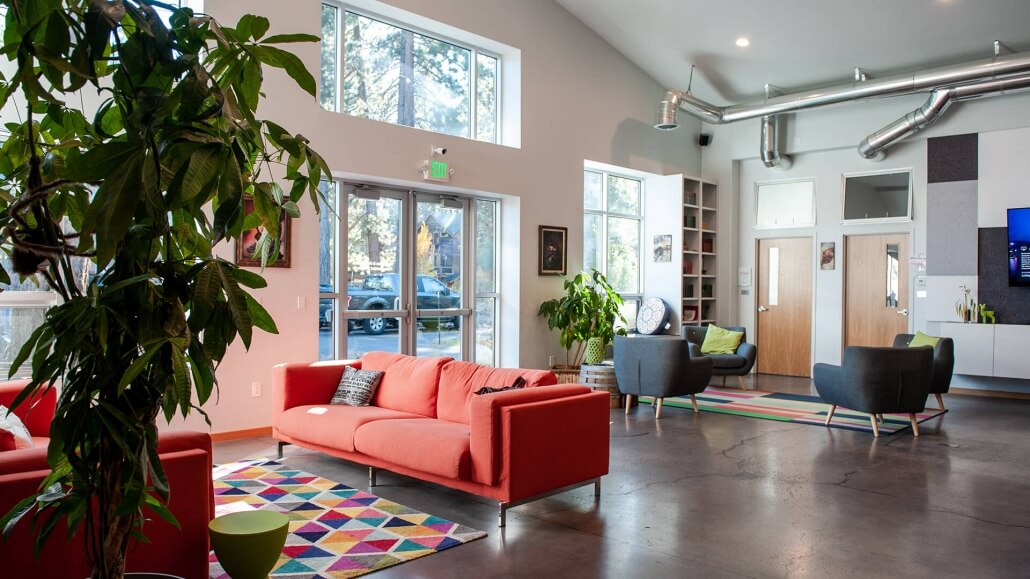
The lobby of Cowork Tahoe in South Lake Tahoe, CA. Photo credit: Erin Ebright.
Coworking & flexible office spaces are quickly becoming a permanent fixture in the global office space landscape. As more and more employees utilize these spaces, the gap between coworking & the traditional corporate office will continue to narrow. It is important for both corporations and for the owners & operators of these flexible workspaces to understand how this type of office environment fits into their operational model, and how it provides value.
As remote work increases, it will become vital for companies to track & measure the impact their distributed workforce has on their bottom line. Coworking space community managers are becoming corporate productivity officers. This role serves as part of the value proposition for coworking businesses, but also as a critical tool for companies when determining their operating costs.
When opening a new office, there is an overwhelming list of expenses to consider. These expenses go beyond the lease price for the physical square footage and are vital to track in order to drive costs down. Commercial real estate services firm Jones Lang LaSalle (JLL), has a simple rule that can be used to estimate the order of magnitude of real estate occupancy costs for an organization. Its called the 3/30/300 rule and is as important for coworking space owners to understand as it is to traditional commercial real estate facility managers.
The 3/30/300 Rule
The rule of thumb is to estimate, on a per square foot annual basis, a total cost to the organization of:
- $3 for utilities,
- $30 for rent, and
- $300 for employees (salaries & benefits).
The 3/30/300 Rule is a particularly important tool for facilities managers when making decisions to help reduce costs for an organization. Traditionally, the focus has been on developing strategies to either lower utilities costs or to reduce the total lease price.
Energy efficiency is a great area to focus on to lower the cost of utilities & is relatively easy to implement. Replacing fluorescent or incandescent light bulbs with LEDs, installing a smart thermostat to regulate the temperature, and using natural light as much as possible can all result in lower utility bills. An energy efficiency initiative that reduces consumption by 10% will impact overall costs by $0.30 per square foot.
Another area of consideration is to reduced rent. To achieve a 10% savings in the lease price, that could mean negotiating the price for a longer term or moving to an area that already has lower rents. Lower rent might also come in the form of an older or less updated building, with less amenities both in the building and in the surrounding neighborhood. That 10% savings, however, equates to a $3 per square foot reduction in overhead.
So even if utility costs are significantly reduced, which is very difficult to achieve without significant investment, a 10% savings in the rental price overshadows the entire cost of utilities to begin with.
But what about the 300 column? Can changes in the workspace impact the cost of keeping employees in their seats?
The answer is a resounding yes, and is in fact where the greatest potential for organizational savings can come from.
Based on the 3/30/300 rule, 90% of the costs for an organization staff salaries & benefits. Anything that results in savings in this area can make a big impact on the balance sheet. A 10% difference, for example, is a $30 per square foot savings. That completely covers the cost of rent for that space.
For a facility manager, reducing costs in this category by having fewer employees or lower salaries is not only not within their purview, but is also not the best way to optimize the potential for savings. Instead, the best strategy is to take into effect how the workspace can increase employee productivity. According to a study published in IZA’s World of Labor, employees that are “happy” are 10-12% percent more productive in their jobs.
Measuring for Productivity
Productivity is not straightforward quantity to measure. It is dependent upon a lot of different interlinked variables, many of which are beyond what a space manager can control. However, there are good indicators and concrete strategies that have been shown to positively impact productivity in the workplace.
The World Green Business Council released a report in 2015 that divides productivity metrics into three areas: financial, perceptual, & physical.
Financial
Financial metrics for an organization include, among others, tracking changes in employee absenteeism & turnover, both of which can have a clear and drastic negative impact on progress on organizational productivity and costs.
Perceptual
Assessing perception can be accomplished by regularly surveying employees and correlating their responses with the more quantitative data in the financial and physical categories. Questions covering things like general comfort in the workspace, rating design elements, the layout of the space, or location and amenities, can all provide valuable insight into the impact of the office space on its occupants.
Physical
Taking direct measurements of the physical space, especially when correlated with responses about comfort, can play an objective role in determining what factors are contributing to or diminishing productivity in the workplace. The more measurements that can be taken easily and by a manager (or even someone using the space) the better. This could include indoor air temperatures, relative humidity, light levels, CO2 levels, and background noise. Additionally, tracking the levels of workstation density, numbers of private spaces versus social spaces, use of plants and greenery, etc. can all contribute to an in depth understanding of how the workspace is used to boost productivity, and how to improve it.
Community Managers as Productivity Officers
Coworking space operators & corporate facilities managers have a lot in common, especially as the modern workplace trends more to a distributed flexible model. For both, “How can we increase productivity for our users?” is a question that should be top of mind. For coworking spaces, an increase in the productivity of members is good for business. If members are getting a lot out of working from the space and are happier, the coworking business will likely see lower member churn, a more engaged community, and more referrals (and thus more members). And for the companies those members work for, the value generated by that additional productivity can be immense, even more so if it comes without the cost of maintaining a large corporate office.
By actively working to improve the office environment to optimize for productivity, community managers in flexible office environments can bring real value to their members and the companies they work for understanding & acting on what increases productivity. Good coffee & green plants are just the beginning.


